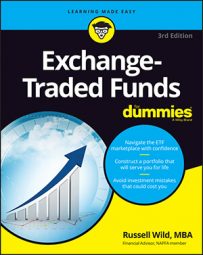For large growth and large growth alone, the four ETF options listed here all provide good exposure to the asset class at very reasonable cost. But please remember that holding a large growth ETF whould be complemented by large value ETF. And such a position should only be used by people with adequate assets ($20,000+). If your portfolio is smaller than that, seek blended options for your large cap exposure.
Vanguard Growth ETF (VUG)
Indexed to: MSCI U.S. Prime Market Growth Index (400 or so of the nation’s largest growth stocks)
Expense ratio: 0.12 percent
Average cap size: $35.6 billion
P/E ratio: 19.2
Top five holdings: Apple, International Business Machines, Microsoft, Google, Oracle
The price is right. The index makes sense. There’s good diversification. The companies represented are certainly large, even though they could be a bit more growthy. This ETF is certainly a very good option. There’s also “The Vanguard edge”, which gives this fund another advantage for those who may already own the Vanguard Growth Index mutual fund. Shares trade free of commissions if held at Vanguard.
Vanguard Mega Cap 300 Growth ETF (MGK)
Indexed to: MSCI U.S. Large Cap Growth Index (300 of the largest growth companies in the United States)
Expense ratio: 0.13 percent
Average cap size: $46.7 billion
P/E ratio: 17.9
Top five holdings: Apple, International Business Machines, Microsoft, Google, Oracle
If you have small caps in your portfolio, this mega cap fund will give you slightly better diversification than the Vanguard Growth ETF (VUG), but this fund is also a tad less growthy than VUG, so you’ll get a bit less divergence from your large value holdings. Either fund, given Vanguard’s low expenses and reasonable indexes, would make for a fine holding. Shares trade free of commissions if held at Vanguard.
iShares Morningstar Large Growth ETF (JKE)
Indexed to: Morningstar Large Growth Index (90 of the largest and most growthy U.S. companies)
Expense ratio: 0.25 percent
Average cap size: $45.3 billion
P/E ratio: 23.3
Top five holdings: Apple, Microsoft, Coca-Cola, Oracle, Google
This ETF offers the growthiness that the Vanguard ETFs lack, but the flip side is that the diversification leaves something to be desired. Apple and Microsoft together make up a tad more than 16 percent of the index, and the fourth and fifth largest holdings are also in that industry.
Perhaps because Morningstar indexes aren’t nearly as popular as S&P indexes, this ETF is thinly traded, which could result in a larger spread when you buy or sell.
What tips the scales and makes this one a contender, is that Morningstar indexes are crisp and distinct: Any company that appears in the growth index is not going to be popping up in the value index.
Schwab U.S. Large-Cap Growth ETF (SCHG)
Indexed to: Dow Jones U.S. Large-Cap Growth Total Stock Market Index (450 or so of the largest and presumably fastest-growing U.S. firms)
Expense ratio: 0.13 percent
Average cap size: $29.4 billion
P/E ratio: 19.2
Top five holdings: Apple, Berkshire Hathaway, Cisco Systems, Google, Microsoft
For the sake of economy alone, this fund, like all Schwab ETFs, makes a good option. The management fee is one of the lowest in the industry. And, like all Schwab ETFs, you can trade this fund for free if held at Schwab. Most importantly, the index is a good one. You can expect Schwab to do a reasonable or better job of tracking the index, even though its ETFs were introduced only in late 2009.

